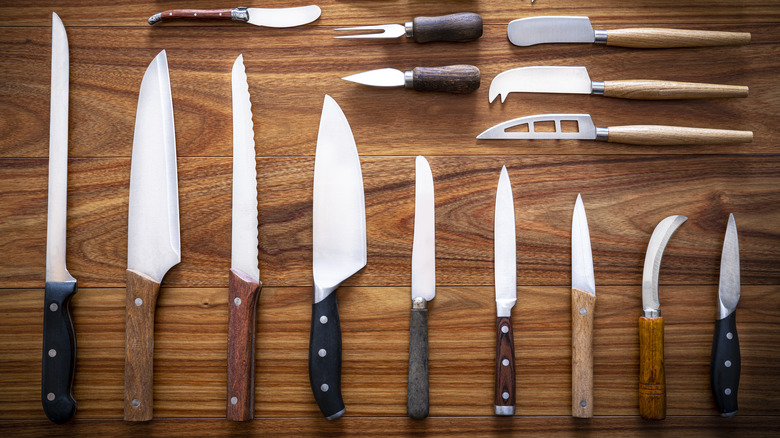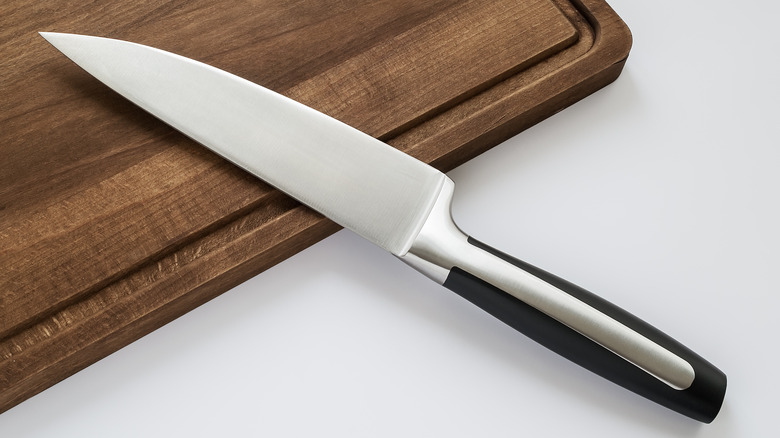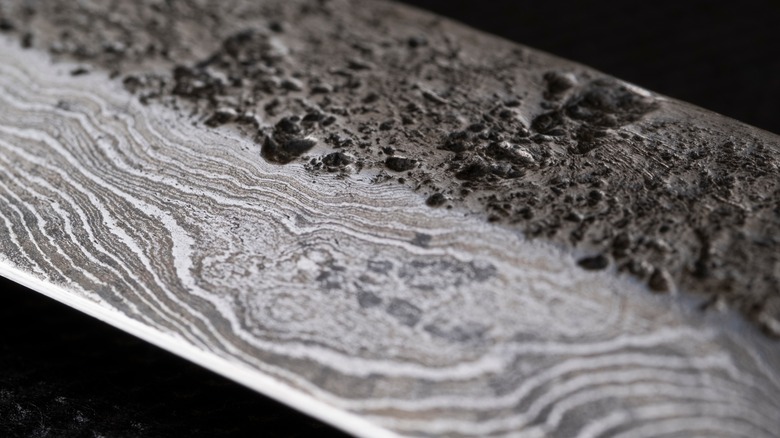The Types Of Steel To Keep In Mind When Shopping For A Chef's Knife
When it comes to choosing the right chef's knife for yourself, you'll need to take a few things into consideration — and mostly, that consideration begins and ends with maintenance and performance. How much energy do you really want to dedicate to maintaining your blade? How much work is this blade going to do for you? Before you can answer these questions, you first have to know the difference between different chef's blades and the steel they're made of.
There are essentially three categories of steel that most chef's blades are made of: Carbon blades are high-performing knives but require a significant amount of maintenance; stainless steel, a nearly indestructible metal that neither rusts nor chips (unless you're trying to) and requires little upkeep; and lastly Damascus steel, a generally strong composite steel that's gained more popularity in the kitchen, they look amazing but have no real clear benefits over other steel. Which one you choose depends on how deep a bond you want to form with your chef's knife.
Carbon steel
Carbon steel is made of iron and carbon. It's prone to rust and is softer than other steels because of its alloy composition. It can be sharpened into an ultra-fine blade, which makes for a sharper, more precise experience. This is especially important when you consider that the only thing more dangerous than a sharp knife is a dull one. Most people know that one of the biggest mistakes you can make when it comes to kitchen knives is working with dull blades. So, carbon blades, if honed and sharpened regularly, are maybe the highest-performing steels you can use. We already know carbon steel makes for great woks and pans.
The downside of carbon blades is that they require more attention and care than a houseplant. You have to be incredibly deliberate when using a carbon steel knife, or else suffer the consequences. These blades cannot be left damp; they must be rinsed and dried immediately after use as well as get coated with oil to ensure proper conditioning. These blades also interact with some foods, imparting off colors or flavors, especially if the blade has not been well maintained. In a nutshell, carbon steel knives are great for performance and not so great for maintenance.
Stainless and Damascus
Stainless steel knives are just carbon steel with a chromium alloy to prevent rusting; other metals are used in composition depending on the blade. Chromium changes the hardness of the blade and makes stainless steel more difficult to sharpen and keep an edge. These knives also will never be as finely sharpened as carbon steel, but they are low maintenance. It's important to note that, depending on the steel alloy, some stainless steel isn't entirely stainless. However, on the whole, stainless steel is virtually maintenance-free and can take a beating.
Damascus steel is interesting because it's technically two steels that have been folded and forged to create different carbon compositions. These different steels can create different levels of hardness throughout the blade — which can be tricky for maintenance but is generally rust-resistant. The bad news is that keeping an edge on these knives is a little more tricky than other types of steel. There are different kinds of Damascus steels on the market; some are high-performing kitchen knives, and others are better suited for hunting or pocket knives. When choosing a chef's knife, consider what your greatest priority for this blade will be, and, armed with the knowledge of your new breakout course on steel, you can confidently choose the right one for you.


